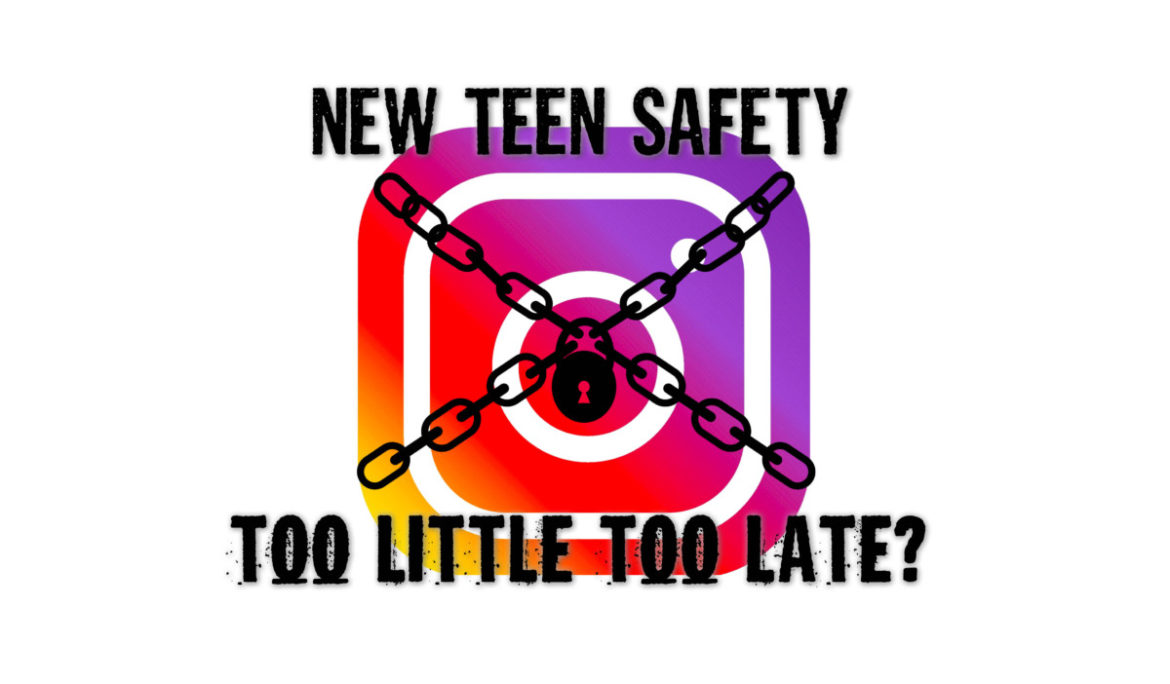Julie Song, Editor-in-Chief
@juliescourant
Instagram recently announced a bundle of new safety measures for teenagers that will release progressively throughout spring of 2022. While encompassing privacy, mental health, and parental control concerns, students and faculty alike see Instagram’s action as necessary, but likely useless, stressing individual responsibility online.
Instagram’s action can largely be attributed to backlash from files leaked by Frances Haugen, the whistleblower from FaceBook (now known as Meta). As reported initially by the Wall Street Journal, reports highlighted that body image issues were worsened in one out of three teenage girls using Instagram and that 13% of British and 6% of American teenage users attributed Instagram as cause of suicidal thoughts/tendencies.
Technology integrator Emily Hernberg said this leaked research was not jarring to her. “It really was not surprising to me, in part, because I have had an Instagram account in the past and personally, I have found social media to be really addicting,” Ms. Hernberg said. “As a new mom, I see posts on what my body should look like, so that’s also the case for teenagers, particularly teenage girls.”
In fact, senior Kevin Li and junior Luke Lambert both agreed that Instagram is a safe platform. However, senior Elizabeth Reed said that she’s encountered the Instagram beauty standard and acted differently in response to it. “There is an ideal body standard that you’ve been exposed to online that you want to look like,” she said. “So I edit my Instagram photos and sometimes I feel bad about it because I don’t want to give people a false idea of what I actually look like, but also you don’t want to be posting a picture that you’re insecure about. It almost makes me sad sometimes because it’s like I’m seeing everything so idealized [on Instagram],” Elizabeth said.
Elizabeth added that this beauty standard aspect of Instagram is detrimental for teens, especially LGBTQ+ youth, who are exploring themselves and identities, whether that be sexual or personal.
History teacher Zeeshaan Arastu also commented on the relationship between identity and Instagram. “I am concerned if [Instagram] is teen’s primary mode of self-expression,” she said. “I think it’s important for students and children to have spaces for self-expression and identity that are not digital.”
Additionally, Ms. Arastu has concerns on overall digital safety. “The spaces online are highly accessible to predators as well as to students,” she said. “I would like to see a stronger presence in regulation around not specifically just teen media, but media generally since media spaces can injure the social fabrics in all the variety of ways that they do.”
Ms. Arastu reasoned that some of that has to do with the nature of Instagram as a company. “[Instagram is] not a public good,” she said. “It is not a public space. It is not a place that guarantees free speech. It’s a private corporation. They can do whatever they want.”
Instagram’s recent action then may address public concerns. Privacy features include accounts of users under the age of sixteen being automatically set to private and only followed accounts able to tag or mention (@) teens. Intuitive systems such as the “Take a Break” and “Nudge” functions will remind teens when they’ve been spending too much time on the app or on a specific topic. Instagram also announced new parental functions if the teen/child account opts in: monitoring screen time, setting daily limits, choosing to be notified if their child account reports something as bullying/harassment, and getting access to an educational hub about Instagram.
However, Ms. Hernberg doubts Instagram’s motives. “They don’t really care about us,” she said. “They don’t really care about people, even if they claim to… Even the safety features that Meta is claiming to roll out aren’t really about our safety, it’s much more about making money and pleasing their investors.”
Sophomore Ashley Mercede brings up the point of easy workarounds to the new rules. “With the regulations, it’s just based on the age that you put on your Instagram account. So anyone could just say that they are over 16 and it wouldn’t be that beneficial,” Ashley said.
Similarly, Ms. Arastu doubts efficacy. “I think students are always ten steps ahead of us. If a kid wants to get around it, they’re going to get around it,” she said. “Kids’ brains are designed to do what you don’t want them to do.”
Additionally, in respect to the parental features, Ms. Arastu has hesitation. “Parental controls are obscenely difficult to use; I struggle with it and I’m not tech savvy, but I’m not tech-illiterate either,” she said. “There’s so many layers that parents just don’t understand… The only reason I hear anything is because I’m in school, without that window, it’s very difficult for parents to really know what’s going on unless your kids tell you and very few will.”
Beyond Instagram’s safety regulations, Ms. Arastu promotes open communication and trust as a parent, but with limits. “There’s a really interesting saying from ancient Arabia, trust in God, but tie your camel,” she said. “Trust your kids, have those conversations about what your job is as a parent, but also follow up and randomly check in on their phones.”
Having this individual and parental responsibility is something freshman Arnav Chaudaury agrees with. Arnav added “[Instagram will] do whatever they can that is legal to make money. Even if it might be in a way that parents might not agree, that’s on the parents, not the company. It’s the individual’s responsibility.”
So in respect to Instagram’s new features, while potentially helpful, many emphasize that they don’t take away from Instagram being Instagram, as well as agree that individual responsibility comes first.
“Of course take advantage of any of [Instagram’s] privacy features, but also be aware that they’re still trying to make money. There is always a personal responsibility on top of the corporate responsibility,” Ms. Hernberg said.




